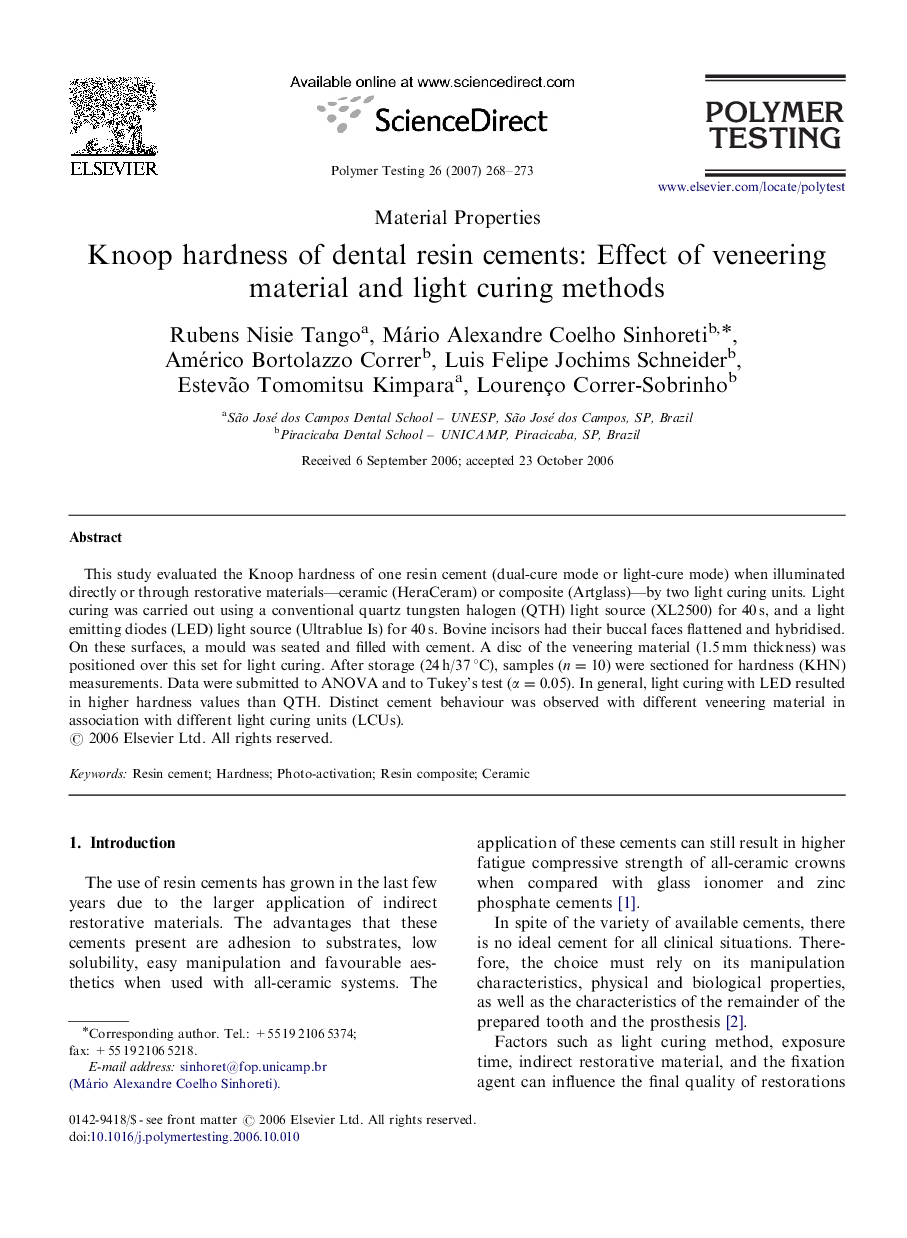| Article ID | Journal | Published Year | Pages | File Type |
|---|---|---|---|---|
| 5207514 | Polymer Testing | 2007 | 6 Pages |
Abstract
This study evaluated the Knoop hardness of one resin cement (dual-cure mode or light-cure mode) when illuminated directly or through restorative materials-ceramic (HeraCeram) or composite (Artglass)-by two light curing units. Light curing was carried out using a conventional quartz tungsten halogen (QTH) light source (XL2500) for 40 s, and a light emitting diodes (LED) light source (Ultrablue Is) for 40 s. Bovine incisors had their buccal faces flattened and hybridised. On these surfaces, a mould was seated and filled with cement. A disc of the veneering material (1.5 mm thickness) was positioned over this set for light curing. After storage (24 h/37 °C), samples (n=10) were sectioned for hardness (KHN) measurements. Data were submitted to ANOVA and to Tukey's test (α=0.05). In general, light curing with LED resulted in higher hardness values than QTH. Distinct cement behaviour was observed with different veneering material in association with different light curing units (LCUs).
Related Topics
Physical Sciences and Engineering
Chemistry
Organic Chemistry
Authors
Rubens Nisie Tango, Mário Alexandre Coelho Sinhoreti, Américo Bortolazzo Correr, Luis Felipe Jochims Schneider, Estevão Tomomitsu Kimpara, Lourenço Correr-Sobrinho,
